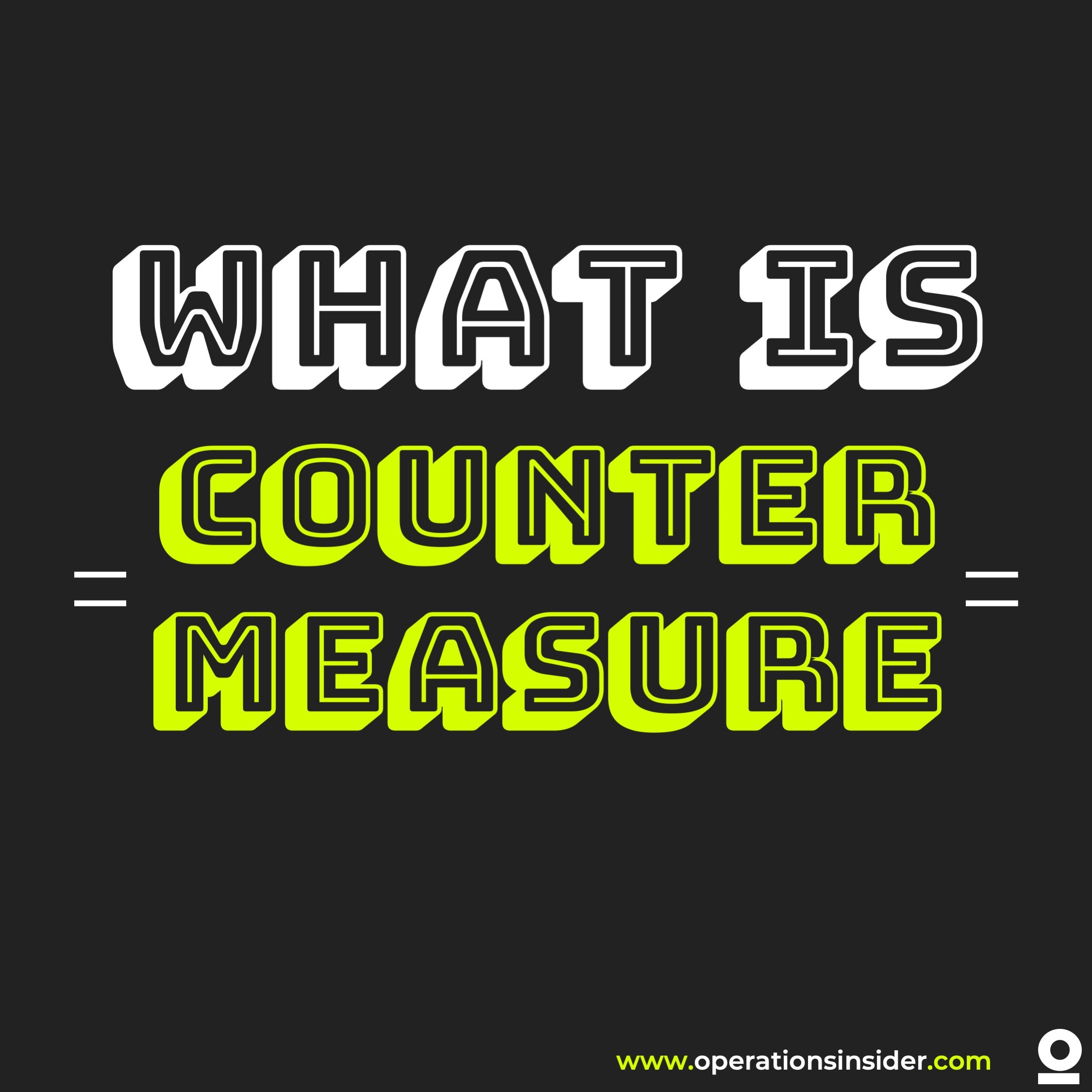
LANGUAGE OF LEAN
Counter Measure
Counter Measurements are a powerful way to track progress and identify areas for improvement, but it is important to understand the difference between short, mid, and long-term actions.
In the manufacturing industry, it is essential to continuously monitor and improve processes to achieve Operational Excellence. One key tool in this effort is the use of Counter Measurements. Counter Measurements are a powerful way to track progress and identify areas for improvement, but it is important to understand the difference between short, mid, and long-term actions.
Short-term actions are immediate solutions to problems that need to be addressed quickly. They are typically reactive, focused on addressing a specific issue and achieving a quick win. Examples of short-term actions include implementing a temporary fix to a machine that is causing production delays, or adjusting a process to improve efficiency.
Mid-term actions are solutions that address underlying issues and provide a longer-lasting impact. These actions may take a bit more time to implement, but they are more comprehensive and often involve a deeper analysis of the problem and its root causes. Examples of mid-term actions include optimizing a production line, improving maintenance procedures, or reducing waste in a process.
Long-term actions are focused on transforming the organization and achieving sustainable change. These actions are strategic, and often require significant investment and planning. They are designed to address the biggest problems facing the organization and to create lasting improvements in processes and systems. Examples of long-term actions include implementing a new production line, modernizing technology, or transforming the supply chain.
So, what makes the difference between short, mid, and long-term actions, and when should each be used? The key difference is the time frame and the level of investment required. Short-term actions are quick, low-investment solutions that can be implemented quickly. Mid-term actions are more comprehensive, requiring a deeper analysis and investment, but they provide a longer-lasting impact. Long-term actions are the most transformative, requiring significant investment and planning, but they are also the most impactful.
To make the most of Counter Measurements, it is important to understand the difference between these types of actions and to choose the right type for each situation. By selecting the right type of action, organizations can achieve quick wins, drive sustainable change, and achieve Operational Excellence.
In a nutshell, Counter Measurements are a critical tool for tracking progress and identifying areas for improvement in the manufacturing industry. By understanding the difference between short, mid, and long-term actions, and by choosing the right type of action for each situation, organizations can achieve continuous improvement and drive sustainable change. With the right approach and the right tools, organizations can achieve Operational Excellence and transform their operations.
Ideal State
The ideal state refers to a vision of a future state where processes are optimized, waste is eliminated, and efficiency is maximized.
The term "Ideal State" is a concept commonly used in the field of Operational Excellence and Lean Management. It refers to a vision of a future state where processes are optimized, waste is eliminated, and efficiency is maximized. In the manufacturing industry, the Ideal State is a vision of a future where operations are running smoothly, production is optimized, and customer satisfaction is high. But what does it take to reach this Ideal State, and what are the key steps to getting there?
The first step in reaching the Ideal State is to understand the current state of operations. This requires an assessment of current processes, an analysis of data, and a clear understanding of the challenges facing the organization. This analysis should provide a clear picture of the current state of operations, including areas of waste, inefficiencies, and potential for improvement.
Once the current state has been understood, the next step is to develop a clear vision for the Ideal State. This vision should be based on the results of the analysis of the current state, and it should take into account the organization's goals and objectives, as well as the current challenges facing the organization. The vision should be clear, concise, and achievable, and it should be shared with all stakeholders.
Once the vision for the Ideal State has been developed, the next step is to develop a plan to reach it. This plan should include a clear strategy, a timeline, and a budget. It should also include clear goals and objectives, and a clear understanding of the resources required to achieve these goals. The plan should be developed in collaboration with all stakeholders, and it should be communicated clearly to all employees.
The implementation of the plan is the next step, and it requires the full engagement of all stakeholders, including employees, suppliers, and customers. This stage involves the implementation of improvements, the implementation of new processes, and the development of new systems and technologies. It also involves the training and development of employees, the integration of new systems, and the implementation of new technologies.
The final step in reaching the Ideal State is continuous monitoring and evaluation. This involves the regular monitoring of processes, systems, and technologies, and the identification and elimination of waste and inefficiencies. This stage also involves the continuous improvement of processes and systems, and the implementation of new technologies and solutions.
In a nutshell, reaching the Ideal State in the manufacturing industry requires a clear vision, a comprehensive plan, and the full engagement of all stakeholders. It requires the elimination of waste, the optimization of processes, and the continuous improvement of systems and technologies. With the right approach, the right tools, and the right mindset, organizations can reach the Ideal State and achieve Operational Excellence.
Stay Connected
Ad
We want information fast and in a nutshell. We from OI recommend Blinkist* - because it’s simply the best.
* = Affiliate Link

































